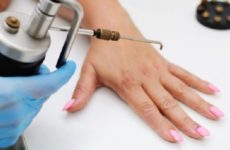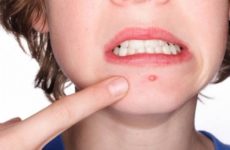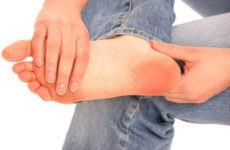A plantar wart is a growth caused by the human papillomavirus (HPV). In most cases, it is considered a benign neoplasm. Localized on the feet. According to statistics, it is formed before the age of 30 years.

Содержание:
Causes of plantar formations
HPV is found in the body in 95% of people. However, the appearance of neoplasms depends directly on the immune system. The risk of warts in people with poor health increases. Their education is affected by: excessive fatigue, stressful situations, insomnia.
The main reasons for the development of warts:
- Excessive sweating of the feet. The epithelium on the feet becomes loose, which contributes to the penetration of various infections into the human body.
- Frequent use of detergents. When washing and cleaning the premises, various detergents and cleaning products are used that destroy the protective layer of the skin, making it easier for infections to enter the body.
- Skin microdamage. Abrasions, cracks, scratches are the main route of infection to the human body.
- atherosclerosis and diabetes mellitus. These diseases are the result of malnutrition of the epithelium of the feet.
- Pedicure tools, unless they have been disinfected.
- Visiting swimming pools, saunas and baths.
- Uncomfortable shoes. Scuffs and blisters can also make it easier for HPV to enter the body.
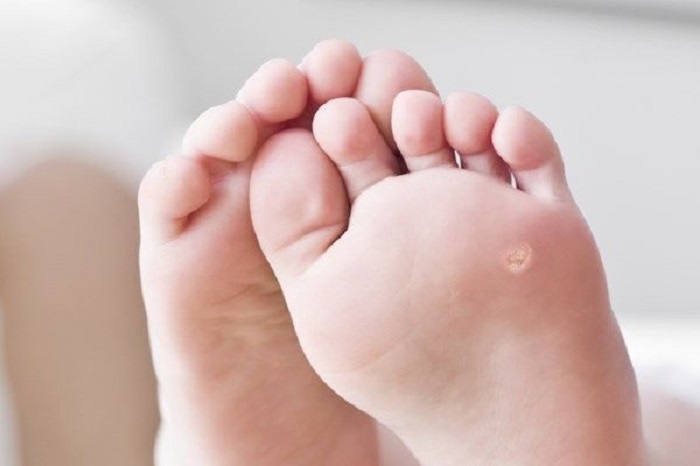
Symptoms and manifestations
The main symptoms of warts on the foot are:
- The appearance of rough skin on a small area of the foot.
- The appearance of pain syndrome at the time of walking, with friction and pressure.
- The height of the growth is up to 2 cm.
- The appearance of bleeding.
- The appearance of black dots in the center of the outgrowth.
- The appearance of periodic itching.
How does she look?
Neoplasms on the legs may not be noticeable during external examination. A small induration with a smooth top texture develops first.
Then a rough crust appears on the surface of the skin, forming a corn. Inside are capillary clots. They look like little black dots. When the horny scales are damaged, there will be a slight bleeding.
The diameter of plantar warts can vary from 1–2 cm, and the height of 0.1–0.3 cm takes on a round or oval shape.
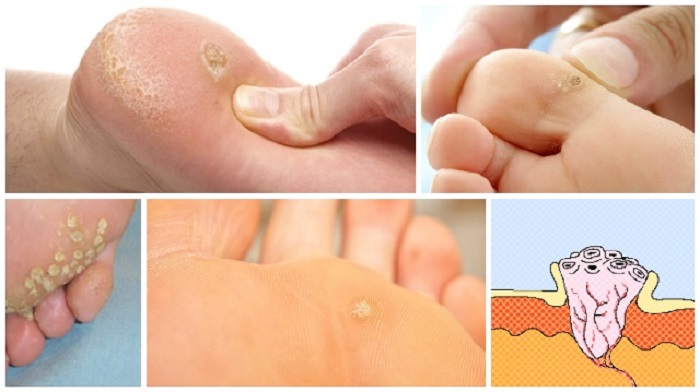
Plantar warts are divided into two types – maternal (develops first) and child (develop around the mother and are smaller). Gradually, they can coalesce and create large lesions.
Plantar neoplasms can cause pain, since the place of their formation is the human foot. The color of plantar neoplasms is brown or white-yellow.
How to distinguish a plantar wart from corns and manifestations of other diseases on the feet?
Plantar warts, calluses and corns differ in their structure. A plantar neoplasm occurs due to HPV. At the same time, it consists of healthy tissues and blood vessels.
If it is damaged, there will be signs of inflammation or slight bleeding. It does not have a solid center. This distinguishes it from ingrown calluses. Calluses are formed from dead tissue and do not have blood vessels.
Ways of infection
The outer epithelium of the plantar wart contains HPV. Therefore, skin scales containing HPV can easily spread to other parts of the body and other people.
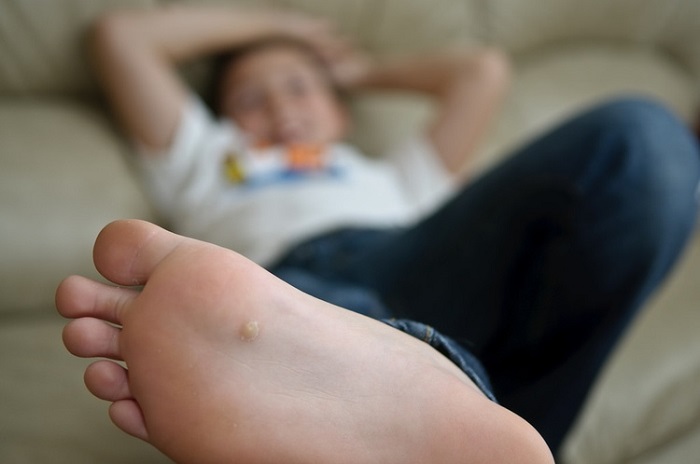
Everyone should know how HPV is transmitted and take precautions:
- It is not recommended to share personal hygiene products with family members.
- It is not recommended to walk barefoot in public places: baths, saunas, swimming pools.
- It is not recommended to walk barefoot at home if one of the family members already has warts.
- It is recommended to follow the rules of personal hygiene.
Varieties of formations on the leg
There are several types of warts:
- Vulgar – warts of small size, having a hard surface of a semicircular shape. They form on the hands, but can spread to other parts of the body.
- Flat – convex spots that have a rounded shape. Appear during adolescence.
- Plantar – outgrowths that have a dense structure and a rounded shape. Localized on the feet and toes.
- Filamentous – growths that have a thin elastic structure. Formed on the skin of the face and in the folds.
- Genital warts are growths of an elastic structure that have a cone shape. The mucous membranes in the intimate area are affected.
- Senile – spots of dark color, covered with scales. They develop in people over 45 years of age.
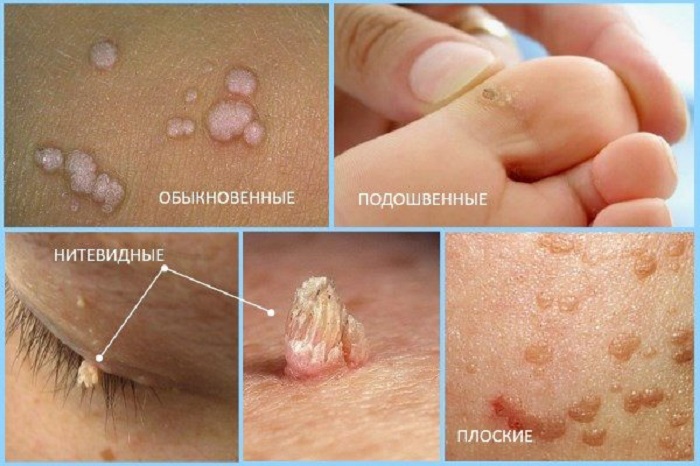
Methods, methods of treatment
In modern medicine, there are several options for dealing with this disease.
- instrumental removal methods;
- medicines;
- folk methods of treatment.
Removal of plantar growths becomes more difficult when HPV penetrates the basal layer of the skin.
Wart treatment is necessary when:
- there is a pain syndrome;
- there is bleeding at the site of the neoplasm;
- the neoplasm is large;
- the neoplasm has an uneven color or blotches;
- neoplasm rapidly increases in size.
Instrumental removal methods
Among the instrumental methods for removing plantar neoplasms, there are two main methods.
Surgical intervention
When using this method, local anesthesia is used at the site of the formed growth, since all infected epithelial tissue should be removed, as well as the edges of intact tissue.
After the procedure, the doctor applies a cosmetic suture. After healing of the skin, a small scar remains. This method is used in the case when the neoplasm should be sent for research.
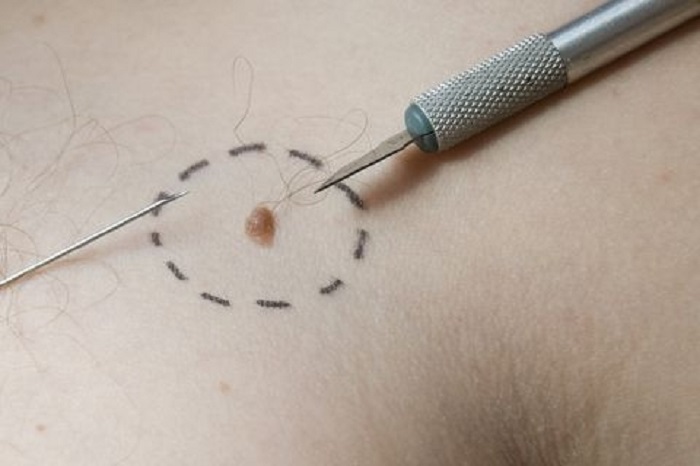
The efficiency of this method is 65%. The healing period is relatively long. There is a high risk of relapse. The cost of such a procedure is from 300 r.
How to get rid of growths with a laser?
This method of treatment is very popular today. Under the influence of a laser beam, the tissues of the neoplasm gently evaporate.
Plantar warts usually go deep under the skin. With the help of a laser beam, their removal is painless. The advantages of this method:
- the operation takes a little time;
- impact on virus-affected tissue on any layer of the epithelium, without affecting healthy epithelium;
- no postoperative sutures;
- fast rate of healing of the skin;
- the use of local anesthesia;
- the laser beam cauterizes the tissues, thereby eliminating the need for care after the operation;
- there is virtually no risk of recurrence.
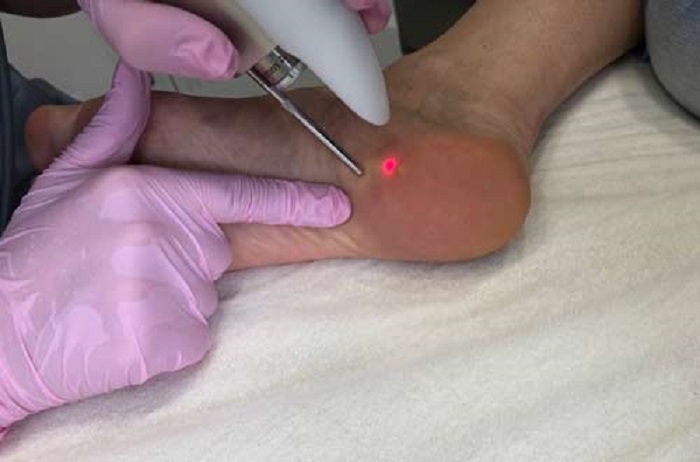
Medicines
For the treatment of plantar outgrowths, various creams, gels and ointments are used.
Necrotic ointments
Drugs that have a local necrotic effect on the epithelium:
- Solcoderm – used for benign neoplasms on the skin.
- Duofilm – affects the growth with a cauterizing effect.
- Vartoks – used to soften growths, in a painless way.
- Kollomak – has a keratolytic effect and reduces the risk of relapses.
- Verrukacid and Ferezol – gently affect the wart, but are highly effective.
- Super celandine – eliminates keratinization of the skin.
- Lapis – used for long-term treatment.
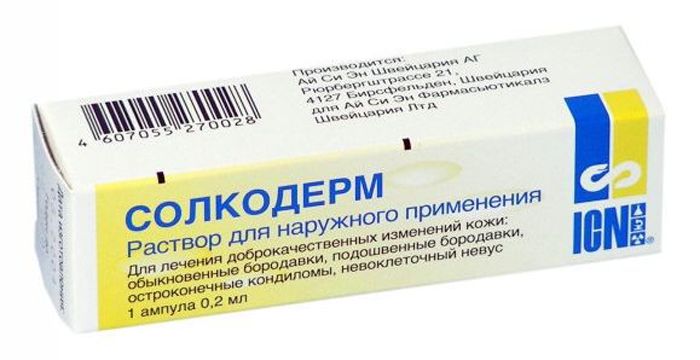
These funds contribute to the death of the affected tissues. When using them, care should be taken that when applied they do not affect areas of healthy epithelium.
The use of antiviral drugs helps to get rid of HPV. The release form is varied – it can be ointments, creams, tablets, injections:
- Oxolinic ointment – affects various types of warts . After application, no scars remain. Does not harm surrounding healthy tissues. It is not recommended to use without the appointment of a specialist.
- Viferon – the composition of the drug includes human interferon, which in the body responds to the attack of pathogenic viral bacteria. Thus, cells affected by the virus cannot multiply. A positive result is visible after 2-3 months of using the drug.
- Panavir – when using the drug, the affected cells stop multiplying. The warts are dying off. Visible results after 2 weeks of use. The drug should be applied strictly to the affected area.
- Arbidol – directly affects HPV, thereby contributing to the death of warts.
- Isoprinosine – when using this drug, the production of interferon is activated, which prevents the development of HPV.
- Anaferon – contributes to the inhibition of the activity of the human papillomavirus.
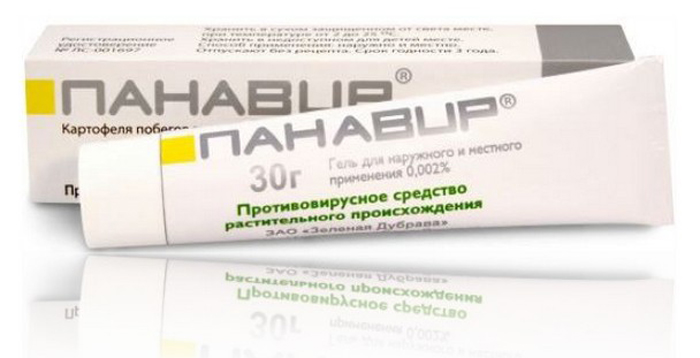
Herbal ointments and creams
There are preparations, the composition of which is based on plant substances:
- Panavir – when using the drug, the cells affected by the virus stop multiplying. The warts are dying off. Visible results after a few weeks of use. The drug should be applied strictly formed outgrowth.
- Aldara – based on plant components. Promotes gentle removal of outgrowths.
- Stefalin – based on plant components. Ideal for plantar outgrowths. Can be applied to children.
Folk methods of treatment
With the help of folk methods of treatment, it is also possible to get rid of plantar growths.
Compresses
Compresses include:
- Vinegar and onion . At the bottom of a small jar, put chopped onion and pour vinegar. There should be enough to cover the onion. Next, you need to clean in a dark place for several days. Next, you should take the patch and cut a hole in it corresponding to the size of the build-up. This is necessary in order to cover healthy skin. Next, take the grated infused onion and cover the damaged area. Apply another patch on top. Remove everything after two hours.
- Plum pulp, acetic acid, salt. You need to take 2 tsp. salt and stir in 1 cup of water, preferably warm. Next, you should pour 2 tsp. vinegar. Dip the plum pulp into the resulting solution, after removing the peel, for several hours. After that, remove the plum, let the water drain. Apply plum pulp to the problem area, bandage it. Remove the bandage after a few hours.
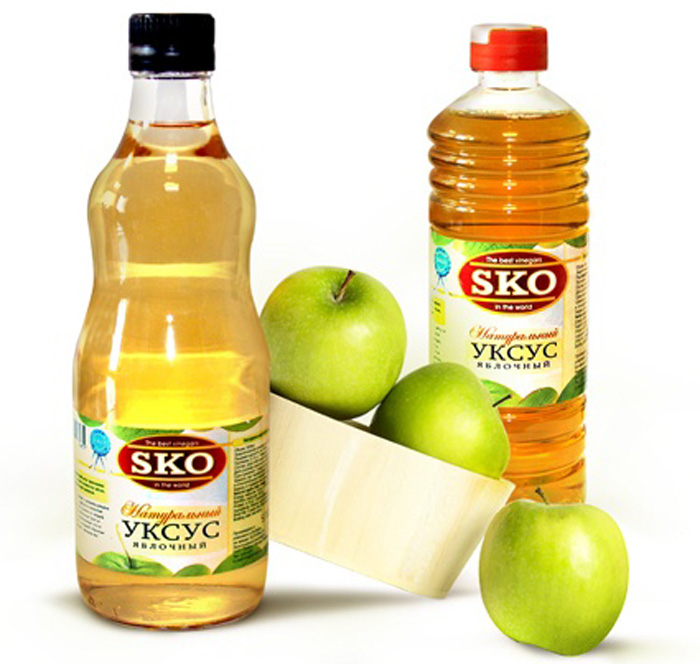
Trays
Human feet are the roughest part of the skin, so the use of any medicinal or folk remedy without prior preparation will be ineffective. Treatment must begin with a preliminary steaming of the legs.
- Soap with soda . It is necessary to dilute 4 tsp. liquid soap and 4 tsp. soda in 2 liters of water, preferably warm. Next, dip your foot in this solution for 20 minutes. After that, wipe dry and remove the top softened layer of skin with a pumice stone.
- Lemon juice and tea tree oil . This tool promotes the regeneration of the skin. It is antiviral and well softens the stratum corneum. Take 1 liter of lemon juice and a few drops of essential oil. Dilute in 2 liters of warm water. Soak your feet in the solution for 20 minutes.
Rubbing
For wipes use:
- Celandine . You can buy a ready-made infusion at the pharmacy and wipe the warts with it daily, or make it yourself using the stems of the plant.
- Freshly squeezed rowan juice . This juice should be regularly wiped at night plantar warts. The positive effect will be noticed in the near future.
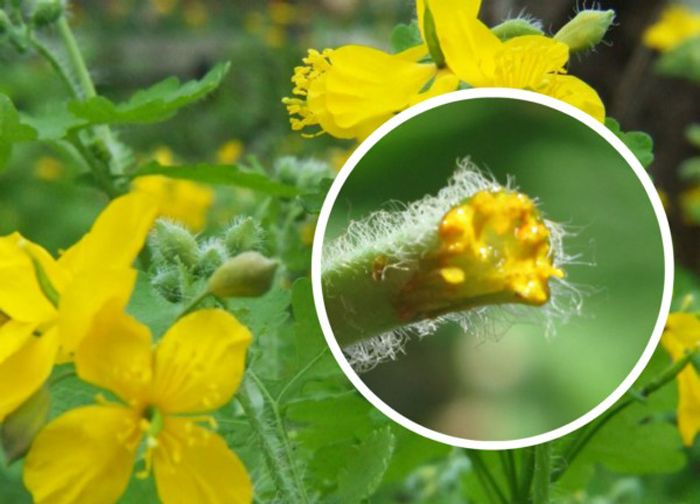
Before using folk remedies, it is advisable to consult a specialist.
Prevention of relapses
To prevent plantar warts from developing in the future, it is necessary to follow the rules of personal hygiene. Disinfectant solutions can be used to treat hands and feet.
With sweating of the feet, special preparations should be used, washed regularly and treated with antiseptic agents.
It is necessary to ensure that the shoes are dry, since it is in a humid environment that the disease actively develops. Try not to wear someone else’s shoes on bare feet.
Conclusion
If you have symptoms of plantar warts, we recommend that you consult a specialist for optimal treatment. Now none of the methods can give a 100% result of a complete cure. It is important to remember that any disease is easier to prevent than to treat in the future.


